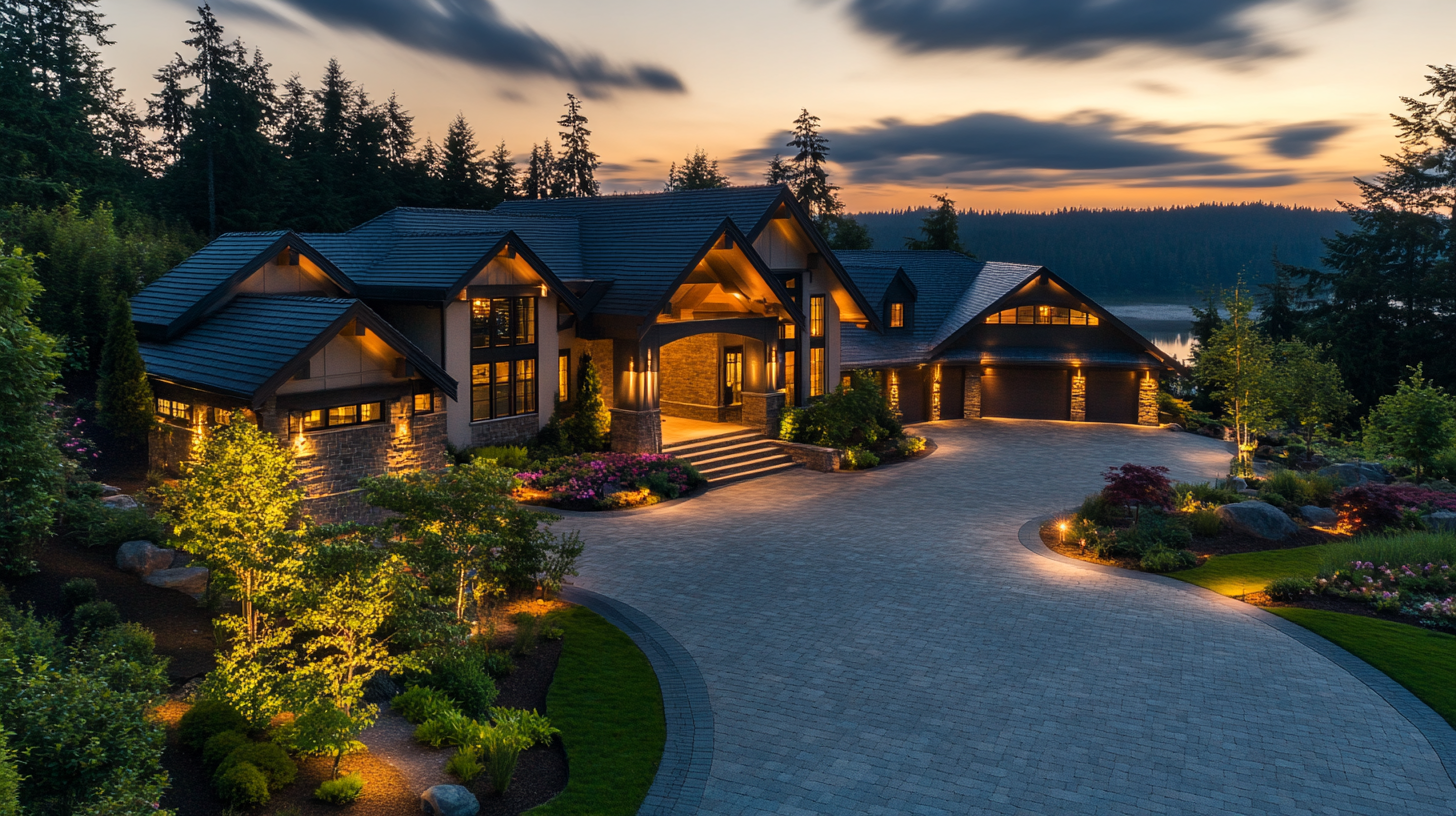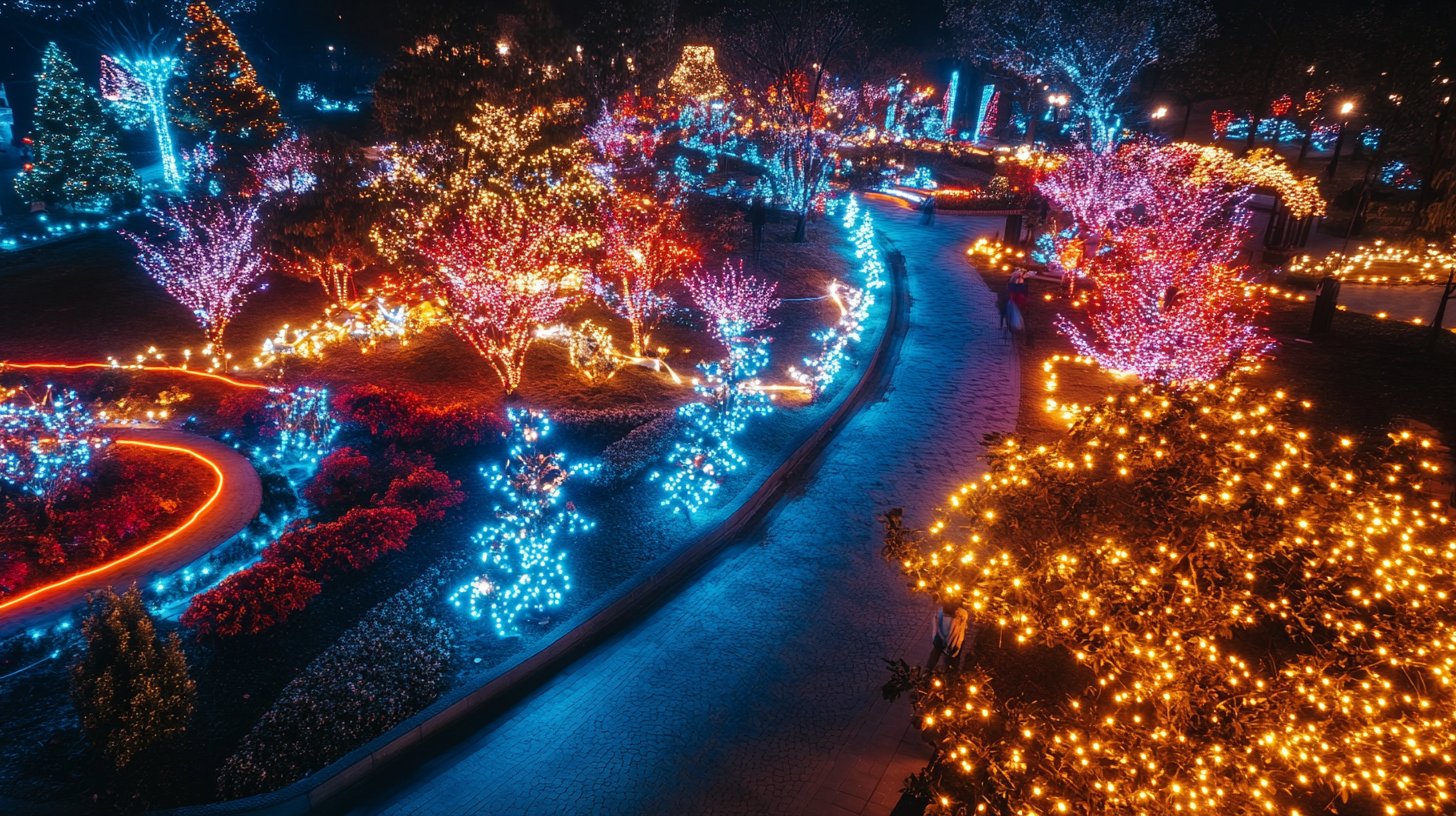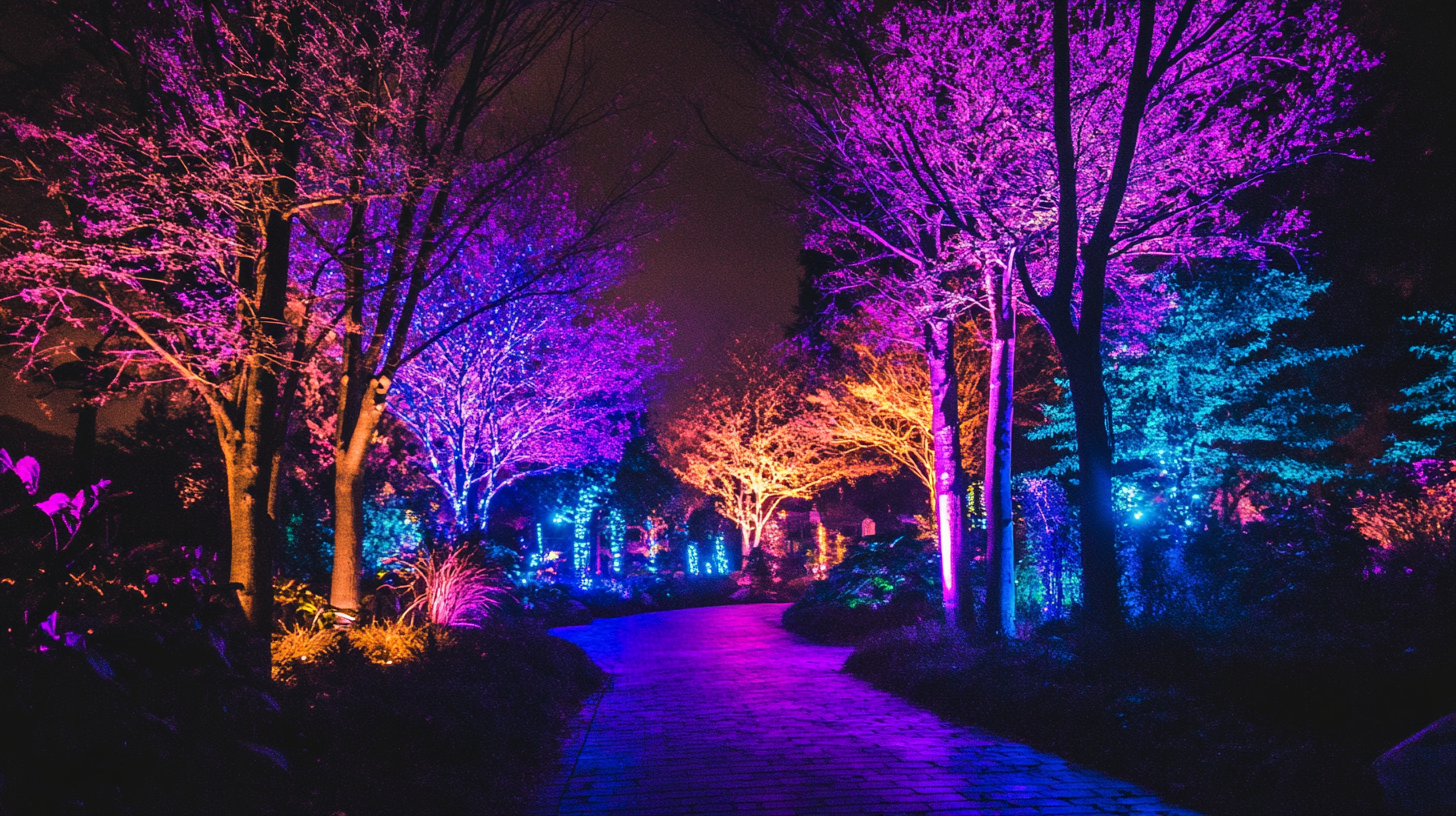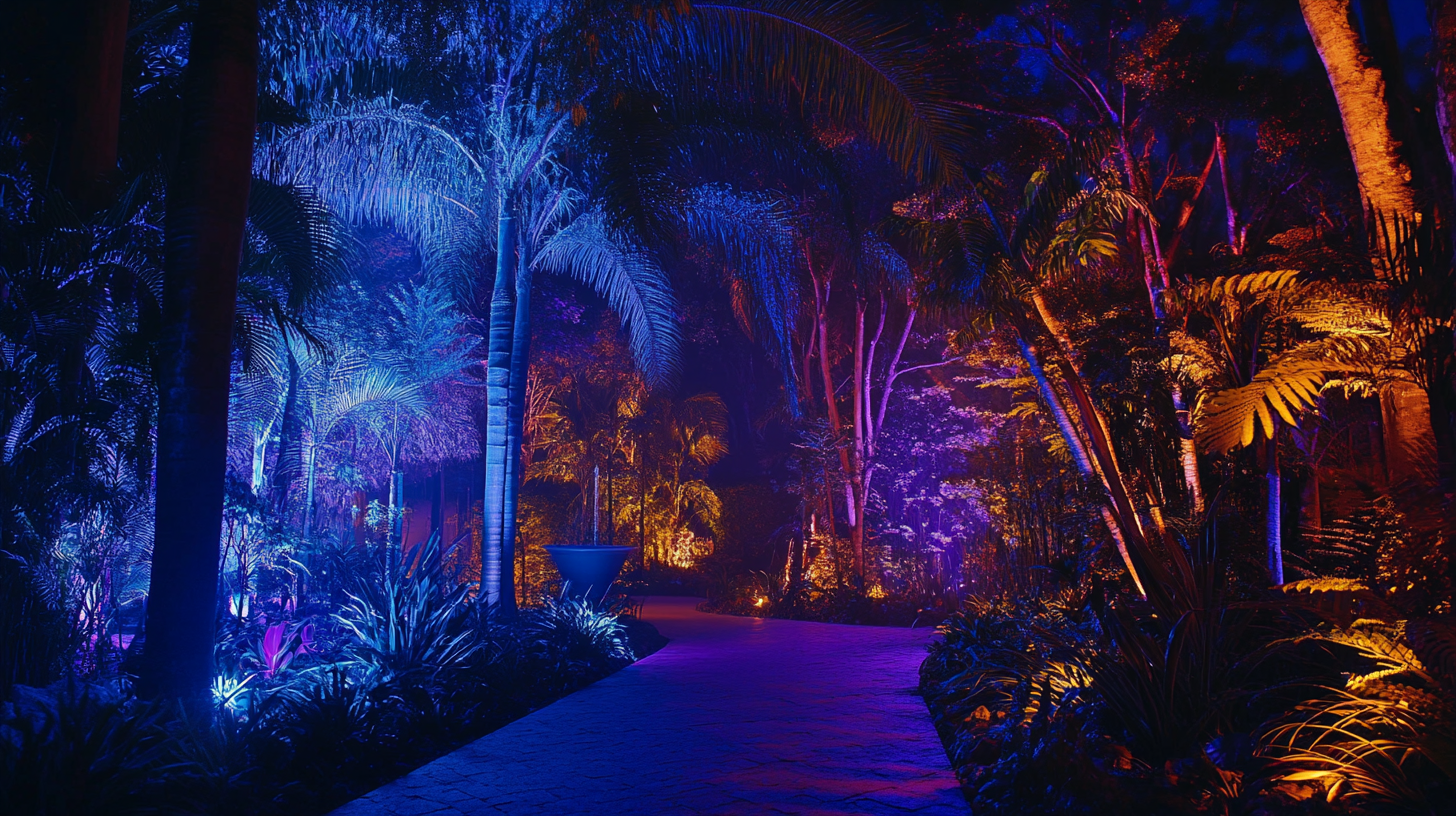Innovations in Landscape Lighting for 2025 and Tips for Global Buyers
Innovation is definitely in store for landscape lighting as the years roll by towards 2025, as ways to enhance outdoor spaces stay to be avenues leading towards sustainability. In a research conducted by Grand View Research, a forecast was given for the landscape lighting market worldwide, estimating that it will hit USD 6.2 billion by 2025. This is possible through LED technology developments and by increasing the worldwide demand for energy-efficient solutions. Intelligent smart applications in landscape lighting not only enable increased functionality but personalization and automation, hence adapting to these changing trends of preferences by the consumers.
In this dynamic environment, buyers worldwide looking out for investments on landscape lighting should keep their eyes open with respect to what is happening within the industry's newest trends and technology. With solar-powered lighting solutions and new designs, there is truly more to the way the industry commits itself to eco-friendly practices. A study by Mordor Intelligence, moreover, shows that North America is said to maintain its dominance in the market by holding a large share because of increased landscaping activities and renovations outdoors. As we look into the innovations that will shape landscape lighting come 2025, let us also consider tips for buyers in making informed decisions on how to utilize these innovations for their outdoor projects.

Emerging Trends in Landscape Lighting Technology for 2025
Changing technology and sustainability are going to bring some changes in the landscape lighting industry by the year 2025. An industry analysis firm called MarketsandMarkets suggests that the landscape lighting market is likely to touch USD 8.5 billion by 2025, with demand for energy-saving and beautiful outdoor solutions for lighting being the growth drivers. Another set of major concerns revolves around how landscape lighting blends with its urban setting and also contributes to light pollution; indeed, this is an emerging issue that has become part of the current legislative battle such as those recommendations put out recently by China's National People's Congress. Smart lighting systems equipped with IoT technology are becoming a trend. Such systems contribute to energy efficiency and advanced control of illumination levels and colors according to the varying needs of different environments. According to a report released recently, Grand View Research has suggested that up until the year 2028, the smart lighting arms of the industry are expected to grow at a CAGR of 25%. This indicates a change to intelligent systems that are capable of not just lighting a space but also adapting to its changing requirements, thus cutting down on energy consumption and minimizing light pollution. The other way landscape lighting has changed in recent years is with an emphasis on environmentally sustainable materials. Manufacturers are increasingly giving preference to environmentally friendly materials and finishes that lower impact on the environment. For example, recycled metals and solar lighting fixtures are gaining more acceptance as a result of consumer demand for greener solutions. These innovations in landscape lighting, when parallelly developed, provide an exception opportunity for world buyers to invest in landscape lighting products that meet their aesthetic desire as well as their environmental responsibility. Technology, sustainability, and regulations will govern the way forward to a bright and green future of landscape lighting.

Eco-Friendly Lighting Solutions: Sustainable Choices for Global Buyers
By 2025, landscape designers can expect increased demand for green lighting solutions. With sustainability in mind for an increasing number of international buyers, innovative manufacturers are designing products that enhance outdoor areas while serving minimally to damage the environment. Such innovations include solar lights and energy-efficient LEDs that allow consumers to contribute less to carbon emissions, whereas allowing for a beautifully illuminated garden and pathway.
The other cool trend with eco-friendly landscape lighting includes smart technology. These systems can be remotely controlled by the user to conserve energy using timers and motion sensors. In this way, homeowners and businesses will keep their lights on when they need them, effectively saving up on energy. Having chosen fixtures from sustainably sourced materials is a direct contribution to the circular economy, thereby offering an easier path for global buyers to greener practices.
Consumers are also considering the longevity and durability of lighting solutions. The motive for sustainability also includes choosing products that can stand the test of time and do not warrant replacement very frequently. Illumination made from weather-protected, durable materials will serve its purpose by withstanding exposure to the elements, thereby reducing chances for replacements and waste buildup over time. These factors will definitely influence globally conscious buyer decisions as they head toward an environmentally conscious future in rightly upgrading their landscapes.

Smart Lighting Systems: Enhancing Landscape Aesthetics with Automation
In a long-term frame resolutely pointing towards 2025, outdoor lighting is about to take things to another level-most prominently, in the realm of smart lighting systems. These systems double up as night fittings for outdoor areas while also conjugating technology with design for more aesthetic value-add. At the crucial center of automation, it now allows residents as well as landscape designers to create living environments that react dynamically to the time of day or specific occasions.
High-tech sensors configure within smart lighting systems and adjust brightness and color temperature in line with user's choice and ambient lighting conditions. Picture a garden taking on a mild, warm glow in the evening but turning quite colorful during some special occasions-only touched with a smartphone app. Platform-specific personalized applications, apart from enhancing the appeal of outdoor spaces operate to save on energy. While holding back energy usage during daylight, each of these applications does extend the beauty of landscapes with ethos preservation.
Smart technology resources in landscape lighting further provide improved security functions through linked smart technology. Motion sensors highlight pathways and entrances upon the detection of movement; this functionality is dual-sided and, therefore, makes it a perfect choice for an international client who would like to enhance the same landscape aesthetics and security. Such is the landscape where the future promulgation of pure shrewdness and amphithend will spice up the way we relate to our outdoor spaces.

Top Considerations for Choosing Landscape Lighting in Diverse Climates
The local climate is one of the top considerations when selecting landscape lighting. Different weather conditions pose varying tests to the durability and functionality of lighting fixtures. Alerted by heavy rainfall or humid conditions, therefore, will require weather-resistant materials that stand up to corrosion, such as stainless steel or high-grade plastics. UV-resistant finish becomes critical in sun-scorched regions where the lights may begin experiencing fading and degradation thereby reducing their effectiveness and aesthetics over time.
Temperature variation experienced across a given site must also be evaluated. In this instance, colder regions will demand bulb and fixture selection that resists freeze action in performance. Good LED fixtures are beneficial in this respect as they cast a good light without consuming much electrical energy and generating very little heat. In hot zones, however, lighting technology may necessitate the use of components that are heat resistant to prevent the deterioration of all fixtures due to extreme peak temperatures.
Equally, the style and aesthetics of lighting must relate with the local architecture and natural landscape. Shades and design must be carefully matched by buyers worldwide to their immediate environment, while also accounting for practicalities like light dispersal and energy efficiency. Putting together climate-specific requirements and the desired aesthetics, the prospective buyers can make decisions that suit their outdoor needs while controlling energy consumption.
Innovative Design Ideas for Maximizing Outdoor Spaces with Lighting
By coming 2025, the innovations in landscape lighting become very stable and turn outdoor spaces into a very beautiful yet functional environment. To maximise outdoor areas that use imaginative lighting, new design ideas have been introduced that make sure such to-the-extreme beautification will encourage individual social gathering and interaction to community tie-ups. While outdoor gathering parties become permanent fixtures in modern urban centers, integrating dynamic lighting solutions has become paramount in architectural and landscape designs to ensure public areas are friendly both during the day and nighttime.
About that, one emerging or developing trend would be materials that lead to the sustainable footprint of their lighting product as well as includes energy-saving technology in such lighting fixtures. This was further evidenced by changes in industry brands as Helly Hansen seemed to be demonstrating this by associatively compartmentalizing product design from elements that are nature-friendly and adventure driven in beckoning action to these users in speaking to the outdoors experience. Emergence, moreover, has come along with multifunctional lighting installations adapting to any use-from the almost serene day to the effervescent gathering-like evenings-ceaseless opportunity for creativity in outdoor spaces. While setting appealing atmospheres and enhancing the safety, such innovative light schemes are indispensable in making spaces enjoyable and practical.
As buyers around the world go out to invest in products for landscape lighting, there would be a clear need to study the demands of modern outdoor living. Thus, with growing concern on sustainable development, buyers should look for solutions that are beyond luminosity enhancement but more of enabling and emitting positive effects in the environment within which they exist. Specific on adaptive lighting designs, these will help in illuminating cultural and societal differences that may be present in outdoor spaces of social modeling-man communities drawing fundamentally together and respecting the surroundings as they do so. The prospective future of landscape lighting outdoor spaces is bright in literal and figurative terms and will literally provide multiple avenues to redefine our interactions with the environment.
